How Waterproof Drones Work: A Simple Guide
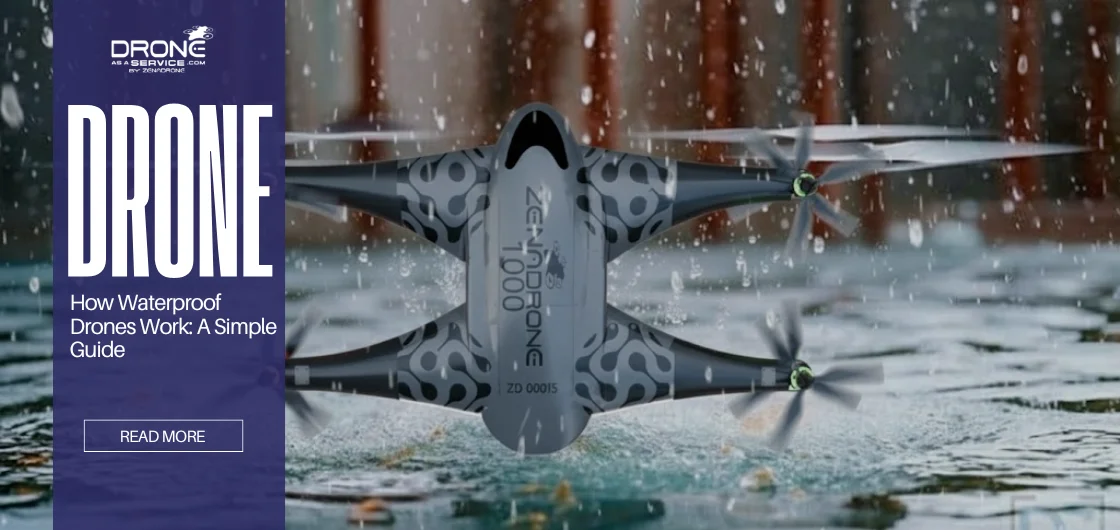
Waterproof drones are engineered to operate safely around water, unlike standard drones that can easily be damaged by moisture. Their electronics are tightly sealed to prevent corrosion, allowing them to fly reliably in rain, splashes, and harsh weather conditions.
This advancement removes one of the biggest limitations of traditional drones, enabling safer operations for marine work, rescue missions, inspections, and more.
In this guide, we’ll explore how waterproof drones work, where they’re most commonly used, how they differ from regular drones, and what to consider when choosing the right model.
How Waterproof Drones Work
Waterproof drone technologies are designed for water resistance, made with different materials and features to withstand constant water immersion. Let’s look into the key features of what makes a waterproof drone:
Sealed Body and Waterproof Housing
A prominent feature of waterproof drones is their airtight sealed housing. They are usually made of water-resistant materials, namely carbon fiber or ABS plastic.
These drones also have customized gaskets and water-repellent coatings, widely known as hydrophobic coatings, for their electronics that serve as a barrier to keep out moisture that could be potentially damaging.
Corrosion-Resistant Motors and Parts
Constant exposure to water can cause components of a drone to corrode easily. Instead of using traditional components, waterproof drones are made up of anodized aluminum materials to prolong their usage.
Waterproof drones use brushless motors, which are designed to endure extended water exposure. In addition to having surfaces that resist rust, using upward-facing ventilation ducts prevents water from being absorbed within the drone motor.
Floating Design for Water Landings
Drones made especially for water do not need inflatable jackets attached to them for them to float on water. Waterproof drone technology used buoyant systems. Typically, this buoyant frame is made of expanded polypropylene (EPP) foam, making it float on water, even when taking off or landing.
Waterproof Camera Housing
Cameras used in waterproof drones are often enclosed in a camera case or housing for fog resistance. They enable image capture underwater and are even used for wet zones.
The gimbal payload used for steadying the camera is most often encased in waterproof housing too, to ensure that camera movements are still stable even in water tremors.
Durable Propellers and Protected Battery Components
Batteries used in water-resistant drones are often Lithium Polymer (LiPo) ones to make them safe from wet environments.
For drone propellers, high-quality plastics or a mixture of anti-corrosion materials are used to make them resistant to water and humidity. They are specifically designed to maintain force, even when submerged in water.
Landing gears are also designed to handle land and water touchdowns. These gears are often retractable, and when partnered with a buoyant frame, they make it resistant to water interference.
Primary Uses of Waterproof Drones
Just like standard drone-powered solutions, waterproof drones are also used across different fields and industries. Let’s look into its modern-day applications:
Fishing
Fishermen do not need to play guessing games when looking for where to fish. With underwater drones, they can easily scout for fish, lure them with their baits, and catch them. They can also record their catch of the day without worrying about the camera absorbing water.
Search and Rescue
In times of storms and unprecedented events in the water, waterproof drones can be invaluable in diving through waters and assisting rescue teams. Rescuers do not need to harm their lives while saving others.
Waterproof drones can be incorporated with assistive technology, such as GPS, and this helps in locating missing persons, equipment, and vessels in their exact spot.
Aerial Photography and Videography
Water-resistant drones are best used to promote tourism and are well-loved by nature and travel bloggers. These drones are excellent tools for filming near bodies of water without the fear of equipment being damaged.
Outdoor Adventures
For adventurous souls who love to surf, boat, or free-dive, underwater drones are perfect for these types of activities. Its floatability and water-resistant build make it an excellent waterproof companion for undersea journeys you can’t resist capturing.
Industrial Inspections
Industry assets that are commonly located or seen within bodies of water, like offshore rigs and ships, make monitoring them a difficult task, not only for safety reasons but also because of their accessibility.
Waterproof drones are able to operate even in wet circumstances, making them an irreplaceable infrastructure asset for inspection and monitoring.
Waterproof Drones vs. Standard Drones
Drones are utilized in different commercial and industrial circumstances. They are all expandable and customizable, depending on your needs.
But when it comes to comparing standard drones and those that have waterproof capabilities, how do you know which one is the correct one to choose?
| Category | Waterproof Drones | Standard Drones |
|---|---|---|
| Build | Built with corrosion-resistant materials; airtight sealed components with rubber gaskets; often IPX7 rated and able to float. | Made with aluminum or lightweight plastic; exposed motors, batteries, and cameras vulnerable to water. |
| Performance | Designed for harsh environments; ideal for search & rescue, marine research, and wet-area inspections. | Best for open areas; used for mapping, inspection, and aerial photography. |
| Cost | Varies by use; typically higher due to waterproof engineering. | Varies by use and features. Generally lower cost. |
| Pros | Operates in rain, snow, and wet environments; highly durable; can float on water. | Lightweight frame; longer flight time. |
| Cons | Heavier due to waterproof coating; shorter flight distances; more expensive. | Not durable in wet or humid environments; vulnerable to water damage. |
Waterproof Drone Model by Drone as a Service (DaaS)
To help you choose the right drone provider for you, here are some of the best waterproof drones on the market:
ZenaDrone 1000
Waterproof Rating: IP67
Key Features: 4K-quality camera with precise GPS tracker and AI-powered analytics. Perfect for photography near wet areas. Flight time is around 15 to 30 minutes.
Typical Case Use: Used for agriculture, inspection, and search and rescue. With its high-quality camera, it’s commonly used for surveillance and photography near wet areas.
Cost: Pricing is based on other customizations.
How to Choose the Right Waterproof Drone
Choosing the perfect waterproof drone depends on your personal needs and usage. Here are some factors to consider when selecting:
Waterproof Rating (IP)
Water-resistant drones have an Ingress Protection (IP) rating that rates their capability to withstand foreign objects like water and humidity.
Common IP ratings seen are IP67 or IPX6. If a drone has a higher IP rating, that means protection is better against water.
Camera Quality and Stabilization
Drones with 4K camera resolution and an excellent gimbal payload or stabilization make them amazing devices for capturing aerial images and videos when filming near water.
Another thing to consider is its ability to deliver quality data under low-light and wet conditions, which are usually present in underwater settings.
Battery Life and Flight Time
Look for drones that enclose their batteries in secure and sealed spaces with a water-resistant frame.
The custom flight time of drones ranges from 20 to 30 minutes. Usual waterproof drones are integrated with flight control software that analyzes their hydrodynamic stability.
Range, Controls, and Ease of Use
The best waterproof drones incorporate technologies that are important for navigation, such as GPS software. It accurately tracks location, especially in cases like search and rescue operations near bodies of water.
They also need obstacle avoidance systems that help in analyzing various areas and terrains that can be associated with water to provide accurate data when dealing with wet surroundings.
Budget Constraints
Look for drones that are within your budget. A standard price for a normal water-resistant drone ranges up to $300. This pricing goes up depending on the features you would like to add, like additional sensors.
To know more about a specific waterproof drone you have in mind, check for user reviews and contact drone services near you to know about official specs.
Limitations of Waterproof Drones
Even though waterproof drones offer many valuable advantages, they have restrictions as well:
Higher Cost
These drones are different from your standard drones. With waterproof sealing, it can add additional costs when manufacturing, making them expensive.
Limited Camera Operations
Not all water-resistant drones offer 4K-quality cameras as their features. Some drones cannot deliver image zooming or smooth capture stabilization.
Heavier Drone Build
Water-resistant drones, with their special frame and coating, are often heavier than your regular ones. It means less flight time than standard drones.
Waterproof Doesn’t Mean Submersible
The terms “waterproof” and “underwater” are used interchangeably when describing drones that are able to conquer any bodies of water, but this is not always the case.
Some waterproof drones cannot be submerged in water. Always check your drone’s specifications before attempting to do so.
Tips for Flying and Maintaining Waterproof Drones
While waterproof drones are already designed to withstand harsh conditions, it is still essential to maintain them regularly.
Rinse Your Drone
It may seem ironic to rinse already waterproof technology. However, exposure to saltwater can make your drone prone to corrosion. When your drone is drenched after its time in the ocean, rinse it with fresh water afterward to ensure longevity.
Dry Drone Before Storage
When drying, use cloths that are not harsh to the drone’s frame, like microfiber cloths, and air-dry it after. Doing so prevents mold growth or possible component damage.
Avoid Long Submersion
Unless your drone is made to brave extended underwater usage, avoid submerging it in water for long periods.
Inspect Seals and Joints
Check the frame, seals, and rubber gaskets of your waterproof drone regularly. Doing so prevents any fungus growth and leakage.
Make Pre- and Post-Flight Lists
During pre-flights, check for the following:
- Battery life, seals, and joints
- Software calibration and controls
After usage, do the following:
- Rinsing and drying the drone
- Inspect for any damage
Waterproof Drones: The Future of Drone Technology
Drone-powered solutions are conquering innovation, and another item to be added in this rapid change is waterproof drones.
Here are features to look forward to in the coming times:
Lightweight Waterproof Materials
Providers of drone technologies are looking into reducing the frame and build weight of water-resistant drones by exploring materials that are not heavy but still waterproof.
Enhanced Video Quality and Stabilization
Cameras used for waterproof drones are expected to deliver at least 8K quality, enabling them to capture the best filmographies, even with water turbulence.
Hybrid Air-Water Models
Waterproof drones are looking into making models that are able to fly and swim for long periods. This innovation is particularly ideal for marine studies and research. Why Waterproof Drones Are Worth Considering The emergence of waterproof drones empowers creators and people looking for adventure. It brings game-changing drone solutions that are reliable and versatile, no matter the industry.
In future, it’s a gadget that will not be considered niche, but a turning point for everyday use.
Read Our Other Blogs

27 November 2025
The Ultimate Guide to Drone Maintenance and Repair
The Ultimate Guide to Drone Maintenance and Repair Flying a drone is exciting, but proper maintenance ensures smooth, safe, and...
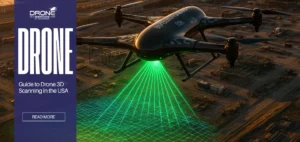
26 November 2025
Guide to Drone 3D Scanning in the USA
Guide to Drone 3D Scanning in the USA Drone-based 3D scanning is changing how teams collect site data. Contractors, developers,...
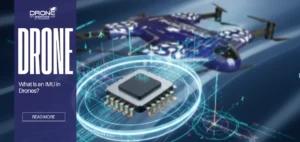
25 November 2025
IMU in Drones: Functions & Benefits
What Is an IMU in Drones? Functions, Benefits, and Accuracy Explained It’s easy to watch a drone fly and think...
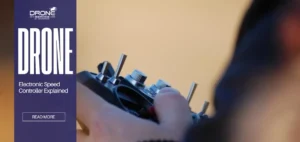
24 November 2025
Electronic Speed Controller (ESC) Explained
Electronic Speed Controller (ESC): What It Is, Types, and How It Works Have you ever wondered how drones go faster...
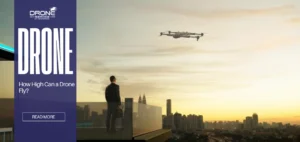
21 November 2025
How High Can a Drone Fly? Legal & Technical Limits
How High Can a Drone Fly? Legal & Technical Limits Drones behave differently at high altitudes and in windy conditions....
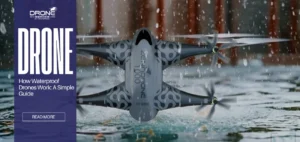
20 November 2025
How Waterproof Drones Work: A Simple Guide
How Waterproof Drones Work: A Simple Guide Waterproof drones are engineered to operate safely around water, unlike standard drones that...


















